How will these resources help you?
The Renaissance is a crucial period of European development and growth in so many areas that underpin almost all subsequent studies, but it is rarely given more than a second glance. Paradoxically, this is because not only are there numerous different areas on which the teacher could focus, but also because for all this breadth, there are few areas where the Renaissance is seen as ‘purely’ historical – art, religious studies, geography and English literature could all lay claim to be the ‘true’ subject for teaching the Renaissance, depending on what aspect of it was being examined.
Despite this, it is a powerful vehicle for the promotion of key historical skills – cause and consequence, source analysis, thematic study and comparative argument lie at the heart of any serious study of the Renaissance.
An overview
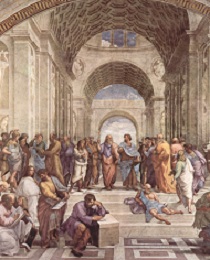
Podcast: In Our Time – The Renaissance
by Melvyn Bragg, published by BBC Sounds, (8 June 2000)
This episode of the highly regarded BBC radio discussion series helps place the Renaissance at the beginning of important developments in European literature, art and human endeavours, but the episode takes great care to ensure that it is not put on a pedestal. Earlier or contemporary developments in different geographical areas are discussed for comparison and it also considers how other factors, such as urbanisation and a growth in political and civic awareness, as well as economic and status-led considerations, fed into Renaissance thought and development. A major issue for potential teachers of the Renaissance is that the beginnings of it are not especially clear – it seems that one moment there was no Renaissance, the next there was. This podcast is excellent for teachers who want an overview of what categorises the Renaissance and the factors that allowed it to come into being.
The comparative view
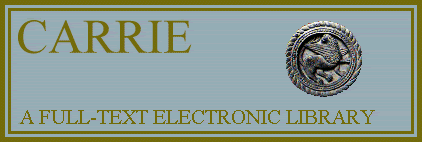
The Renaissance and Reformation
by William Gilbert, published by the author on CARRIE, (1 January 1997)
This privately published work (available for free online) is invaluable for its range and clarity. The best way I have found (so far) of covering the breadth of the developments of the Renaissance at Key Stage 3 is to put pupils into small groups and assign them to city-states – Florence, Rome, Milan, Venice – and have them study their particular city-state in detail, liaise with a different group to exchange information and then move on to form judgements over significance, connections and contrasts. Pupils could explore a particular individual who worked in each city (e.g. da Vinci, Michelangelo, Petrarch, Galileo), the factors that lay behind the rise of their city-state or the form of government in each city-state and how it facilitated the Renaissance. If the latter, you will find Chapter 3 particularly useful – it deals with all four city-states referenced above and also looks at Naples. Chapters 1– 10 deal largely with the Italian Renaissance, where most of the straightforward comparisons can be drawn. Chapters 11 onwards bring in developments in different countries, which would allow you to create a more pan-European view.
The contemporary view
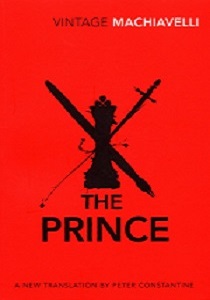
The Prince
by Niccolò Machiavelli, published by Vintage Classics (Penguin), (2009), 9780099518495
Machiavelli’s work ticks two crucial boxes for teachers and pupils studying the Renaissance. First, in and of itself, it is a remarkable insight into the way key events in the dynastic struggles of Milan, Pisa, Florence and other city-states were seen by contemporaries. Primary sources are seldom as detailed, or as brief, as Machiavelli’s work, which therefore allows a great deal of scope for discussion without being overwhelming. Second, it dips in and out of classical antiquity when examining the developments in fifteenth- and sixteenth-century Italy. This gives the reader a fuller sense of the values that Renaissance writers and thinkers held dear: Which Emperors of Rome were considered worthy of imitation? Whose examples needed to be avoided at all costs? Despite being based in Florence, Machiavelli’s work touches on all other significant city-states. This is particularly useful if teachers are following the model of small groups of students each being allocated to one city-state.
The long view
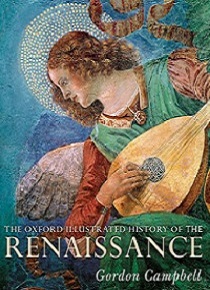
The Oxford Illustrated History of the Renaissance
by Gordon Campbell, published by Oxford University Press, (2021), 9780198862666
| This is a collection of eleven essays rather than one large work by a single author, but this has its advantages. Each essay (which range in length but are generally around 40 pages) deals with one particular aspect of the Renaissance, so while you could ‘weave a tapestry’, you could also follow individual threads. These threads include subjects such as science, religion and technology – again allowing for a comparative or thematic approach to be developed, depending on how you wish to focus the course, and is of great value if you want to assign city-states to small groups and have your Florentine group looking at art, your Venetians at trade, etc.
Audiovisual clip
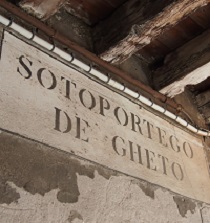
The Story of the Jews - The Venice Ghetto
published by BBC, (2013)
Renaissance Venice wasn't all made of luxury and art, it also gave birth to the world's first institutional ghetto. This clip tells the story of it, and how Jews were forced to live into the "Gheto".
Quiz - student's copy
Test your students' knowledge with these questions on the above clip.
Includes a Vocabulary section.
Includes a Vocabulary section.
Quiz - teacher's copy
Test your students' knowledge with these questions on the above clip (with answer key).
Includes a Vocabulary section.
Includes a Vocabulary section.
Further Materials
The Civilisation of the Renaissance in Italy by Jacob Burckhardt, published by Penguin Classics, (1990), 9780140445343
Find this book
Was there a Women’s Renaissance?, published by History Today, Vol. 70 Issue 11, (November 2020)
Read this article
A History of Venice by John Julius Norwich, published by Penguin, (2012), 9780241953044
Find this book
Andrew Weston is the Head of History and Politics at a leading independent school in Surrey. He began teaching in 2002 and is particularly interested in the history of relations between citizens and governments.
Text © Andrew Weston, 2021.
Text © Andrew Weston, 2021.



